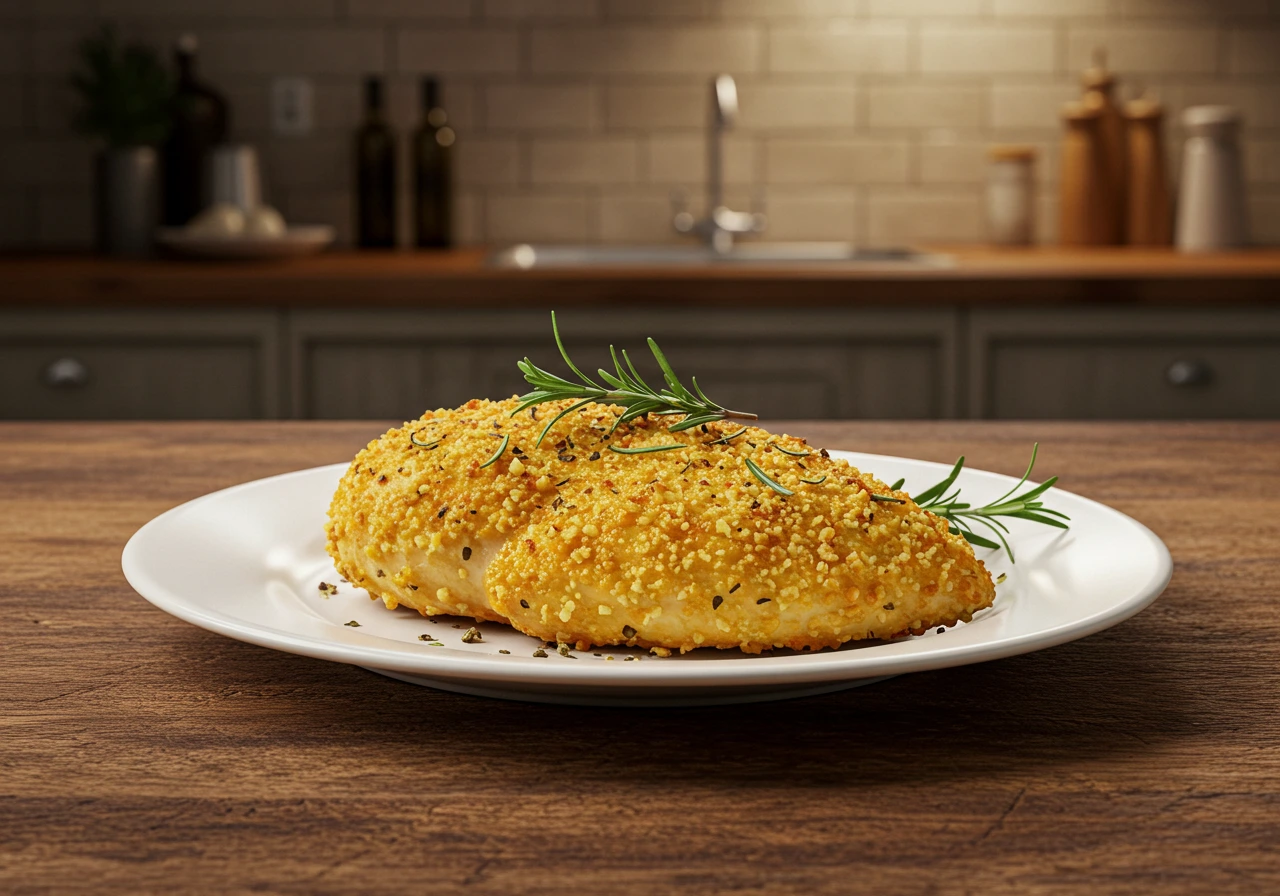Introduction
When it comes to bold, refreshing, and zesty flavors, Peruvian cuisine doesn’t hold back—and at the heart of one of its most celebrated dishes is a mysterious and invigorating liquid called leche de tigre. Literally translating to “tiger’s milk,” this citrus seafood marinade has been embraced as both a life-giving elixir and a cultural icon. Whether you’re enjoying it straight as a shot, pouring it over fresh ceviche, or incorporating it into modern fusion dishes, the experience is unforgettable.
In this ultimate guide, we’ll walk you through every juicy detail of the leche de tigre recipe. From its historical roots to its spot in today’s fine dining world, we’re covering it all. And yep—I personally tried it, so you’re getting the real, spicy scoop. Let’s kick things off by uncovering what leche de tigre actually is—and why the world is obsessed.
Part 1: Understanding Leche de Tigre
What Is Leche de Tigre?
You might think it’s some mythical potion, but nope—leche de tigre is very real and ridiculously flavorful. This tiger’s milk is a tangy, spicy, and umami-rich liquid born from the drippings of ceviche. Traditionally, it’s a mix of lime juice, onion, fish juice, garlic, cilantro, and chili pepper, most often ají limo or ají amarillo. Sound intense? It is, but in the best way.

What’s fascinating is that this isn’t just a byproduct. It has evolved into a beloved standalone dish and even a revered hangover cure. It packs a citrusy punch with a peppery bite that wakes up every sleepy taste bud. And trust me, if you’ve never tried sipping this stuff from a shot glass, you haven’t lived.
Origins and Cultural Significance of Leche de Tigre
Let’s roll back the clock. Leche de tigre traces its roots to the vibrant coastlines of Peru, where fresh fish and strong spices reign supreme. Originally, it was the leftover juice from making ceviche, a dish with raw fish cured in citrus. Locals, especially fishermen, began slurping up this leftover mixture as a pick-me-up. Before long, it was no longer an afterthought—it was the main event.
Today, it’s an irreplaceable staple in Peruvian culinary culture. It symbolizes health, vitality, and good times. At upscale restaurants, chefs now create leche de tigre shooters garnished with shrimp, cancha (toasted corn), and even seaweed foam. Yet at street stalls in Lima, you’ll still find the classic, no-fuss version—sassy, tangy, and unapologetically bold.
Health Benefits and Nutritional Value of Leche de Tigre
Surprisingly, leche de tigre isn’t just a treat for your tongue—it’s pretty good for your body too. Thanks to its core ingredients, it’s packed with:
- Vitamin C – from all that fresh lime juice, which supports your immune system
- Omega-3 fatty acids – when made from oily fish like sea bass or corvina
- Antioxidants and anti-inflammatory properties – from garlic, onions, and chili
Some even claim it’s an aphrodisiac—though we’ll let you test that theory yourself.
And don’t forget the digestive boost. The acidity of lime and the enzymes in fish help stimulate your stomach, which is likely why it’s viewed as a cure for everything from hangovers to heartbreaks.
Bonus Insight: Where Tradition Meets Innovation
Modern Peruvian chefs are reinventing leche de tigre in astonishing ways. For example, some blend in coconut milk for a tropical twist, or incorporate miso for umami overload. And if you’re a ceviche purist? No worries—the classic version remains untouched and divine.
In fact, Saveur’s take on the traditional Leche de Tigre recipe is a beautiful tribute to the simplicity of the original dish. It’s worth checking out if you’re curious about authentic proportions.
Essential Ingredients for Leche de Tigre
If you want to capture the true zing of an authentic leche de tigre recipe, you can’t cut corners with the ingredients. The magic comes from a short but potent list of items—each one playing a starring role. Here’s what you need for that iconic tiger’s milk flavor:
Fresh Lime Juice
The backbone of any great leche de tigre is freshly squeezed lime juice. Don’t even think about using the bottled stuff—real lime juice is tangy, lively, and packed with natural oils that bring the whole dish to life.
White Fish (Corvina or Sea Bass)
Peruvian ceviche and leche de tigre traditionally use corvina or sea bass for a delicate, ocean-fresh flavor. These fish are firm, slightly sweet, and absorb the marinade without falling apart.
Fish Stock
To boost the umami and keep the mixture from being too tart, a little fish stock is added. This also helps stretch the leche de tigre without watering it down. Homemade stock is always best, but a low-sodium store-bought version works in a pinch.

Garlic and Ginger
A single clove of garlic gives the mixture bite, while ginger adds a bright, floral heat that tingles on the tongue. These two create a complex backbone for all the citrusy notes to dance upon. Even a small amount of each makes a difference, so don’t skip them!
Cilantro Stems
While cilantro leaves garnish the final dish, the stems actually carry more flavor and a slight crunch. Tossing them in the blender with the other ingredients infuses the leche de tigre with a grassy, almost citrus-like aroma.
Ají Amarillo
This Peruvian yellow chili pepper brings signature color and a fruity, mild heat. It’s not just for spice—ají amarillo adds complexity, a gentle warmth, and a beautiful golden hue to your tiger’s milk.
Want more inspiration? Check out Popsugar’s vibrant twist on the classic leche de tigre for fresh ideas that still honor the tradition.
Ingredient Substitutions and Variations
Now, let’s be real: Not everyone has a Peruvian market down the street. So, what do you do if you can’t find all the traditional ingredients for your leche de tigre? Don’t worry—I’ve got some tried-and-true swaps and playful upgrades that won’t sacrifice flavor.
Ají Amarillo Substitute
Can’t track down ají amarillo? Use a blend of yellow bell pepper (for sweetness and color) and a little habanero (for heat). Alternatively, serrano or jalapeño peppers can also bring brightness and a manageable kick. Just be careful—habanero packs a punch, so use it sparingly.
Lime Juice Variations
While limes are essential, a mix of lime and lemon juice can give your leche de tigre a slightly different but equally zesty flavor profile. In a pinch, Meyer lemons add sweetness and complexity, mimicking the gentle tang of Peruvian limes.
Fish Substitutions
If corvina or sea bass isn’t available, other white, firm-fleshed fish like snapper, halibut, or tilapia work beautifully. For a unique spin, try using shrimp or scallops—these options soak up the marinade and offer a luxurious texture.
Herbs and Aromatics
Out of cilantro? Flat-leaf parsley is a gentle substitute, bringing freshness without overwhelming the other ingredients. You can also experiment with a tiny bit of mint for an unexpected, cooling note.
Vegetarian or Vegan Twist
Craving the flavor but skipping seafood? Try making a vegan leche de tigre with a base of vegetable stock, mushrooms, and hearts of palm for a surprisingly rich, umami taste.
For a deeper dive into creative variations, the r/viterecipe community on Reddit offers loads of user-tested adaptations and bold ideas that prove you can make leche de tigre your own without leaving your kitchen.
How to Make Authentic Leche de Tigre
Making authentic leche de tigre at home might sound intimidating, but trust me—once you gather your ingredients, the magic happens fast. It’s one of those dishes that’s all about freshness, bold decisions, and a bit of culinary flair. Follow this step-by-step leche de tigre recipe, and you’ll be sipping on this Peruvian gem in no time.
Ingredients You’ll Need:
- ½ lb (225g) fresh white fish (corvina, sea bass, or snapper)
- ½ cup fresh lime juice (from 4–6 limes)
- ¼ cup fish stock or cold water
- 1 clove garlic, peeled
- 1-inch knob fresh ginger, peeled
- ¼ red onion, thinly sliced
- 1 ají amarillo (or sub with a combo of bell pepper and a sliver of habanero)
- 1 small handful cilantro stems
- Salt to taste
- Optional garnish: chopped cilantro, cancha (toasted corn), sweet potato slices
Instructions:
Step 1: Prep the Fish
If you’re not using leftover ceviche marinade, start fresh. Dice the white fish into small chunks. Set aside a few pieces for blending, and reserve the rest for serving later or using in a ceviche mix.
Step 2: Blend the Base
In a blender, combine the lime juice, fish stock, garlic, ginger, ají amarillo, onion slices, cilantro stems, and a few pieces of the diced fish. Add a pinch of salt. Pulse a few times, then blend on high for about 20–30 seconds until smooth.
Step 3: Strain for Silky Texture
Pour the blended mixture through a fine mesh strainer or cheesecloth into a clean bowl. Use the back of a spoon to press out every last drop of liquid gold. You want a creamy, silky texture—without the pulp.

Step 4: Adjust and Chill
Taste and adjust the salt, spice, or lime juice as needed. Some like it tangier, some spicier—make it yours. Once adjusted, refrigerate for 10–15 minutes to let the flavors marry and chill slightly. This step is crucial for refreshing flavor.
Step 5: Serve It Up
Serve cold in a small glass or bowl. Garnish with fresh cilantro or red onion slices. Want to level up? Add a bite of fish, a slice of sweet potato, or crunchy cancha on the side. Sip it, spoon it, slurp it—there’s no wrong way to enjoy it.
Oh—and don’t forget, the best leche de tigre is made with love and a dash of daring!
Need some modern chef inspo? Try this modern take on Leche de Tigre by Bon Appétit—a fun remix that brings out the essence of Peru with a contemporary twist.
Tips for the Perfect Leche de Tigre
Achieving the perfect leche de tigre is about more than just tossing things in a blender. It’s an art of balancing flavors and textures. Here are my top tips from personal experience in the kitchen:
- Use ultra-fresh ingredients. This isn’t the time for frozen fish or bottled lime juice. Freshness makes all the difference.
- Blend, don’t pulverize. Over-blending can create a frothy, foamy mess. Aim for a smooth purée with minimal air.
- Strain with care. Don’t rush this step. A fine-mesh strainer will catch all the fibrous bits and give you that smooth, luxurious finish.
- Tweak to taste. Want more heat? Add more chili. Too tart? A splash of cold water or fish stock mellows it out.
- Serve ice-cold. Chilling enhances the flavor and gives it that crisp, refreshing edge. It should shock your senses—in the best way.
Serving Leche de Tigre
So, you’ve mastered the leche de tigre recipe—now what? Well, serving it is where things get really fun. This versatile, vibrant marinade isn’t just a supporting act for ceviche. In fact, it shines bright on its own, taking center stage in some of Peru’s most flavorful presentations.
Traditional Style: Shot or Spoon
In coastal Peru, you’ll often see leche de tigre served in a small shot glass, topped with a bite of fish, a ring of red onion, and a sprinkle of cancha (toasted corn). It’s a wake-up call for your taste buds. Locals love sipping it as a quick refresher, especially on hot days or after a night out (yep—it’s known for curing hangovers!).
Another old-school serving method? Poured directly over ceviche as a marinade. It bathes the raw fish in bright citrus and peppery goodness, infusing every bite with depth. This is where leche de tigre first found fame, and it remains a go-to across home kitchens and seafood stalls alike.

Modern Fusion Twist
These days, creative chefs are turning leche de tigre into everything from gazpacho-like starters to the base for seafood shooters. High-end restaurants, like those featured on Fine Dining Lovers, elevate it with foam toppings, microgreens, or a touch of coconut milk for richness.
And here’s a twist I’ve seen recently—pouring it over chilled oysters or using it as a citrus drizzle over grilled shrimp. The zingy bite enhances seafood without overpowering it. Even Amaranth Foods suggests using leche de tigre as a marinade for heartier proteins like tofu or mushrooms for a vegetarian-friendly option that still packs a punch.
Whether it’s old-school or avant-garde, serving leche de tigre is all about celebrating freshness and flavor.
Pairing with Dishes and Drinks
The vibrant tang and slight spice of leche de tigre pairs beautifully with a variety of dishes. If you’re enjoying it solo, serve it alongside:
- Crispy cancha – those toasted corn kernels add irresistible crunch and balance the acidity.
- Sweet potato slices – traditional and effective, these calm the heat and round out the profile.
- Plantain chips or cassava crisps – great for dipping or simply cleansing your palate.
For a full meal, serve it with:
- Fresh ceviche – of course! The marinade itself is the bridge between your seafood and flavor.
- Grilled prawns or scallops – spoon a little leche de tigre over them right before serving.
- Chilled quinoa salad – toss it in lightly to add citrusy flair without overwhelming the dish.
As for beverages, a chilled mocktail with lime, cucumber, or ginger makes a refreshing match. The citrus components of both play off each other in the best way—bright, clean, and absolutely satisfying.
Next up, I’ll share my personal experience trying this recipe at home. From my first squeeze of lime to the final zesty sip, you’ll get the inside scoop. Let’s keep the flavor train rolling!
Trying the Leche de Tigre Recipe
I’ll be honest—I wasn’t sure what to expect the first time I set out to make leche de tigre in my own kitchen. The name alone carries a certain intensity, right? Tiger’s milk sounded like something fierce, something bold. And let me tell you—it didn’t disappoint.
From the get-go, the aroma of fresh lime juice and chopped cilantro filled the air, immediately transporting me to a Peruvian cevichería. I followed the steps carefully, tossing fresh white fish into the blender with garlic, ginger, ají amarillo, and all the other flavor bombs. At first, I was worried the mix might be too sour or too spicy. But once I strained it and gave it a taste… wow. The flavors hit in layers: first the citrus tang, then the slow-building heat from the chili, and finally that savory depth from the fish stock.
I served it as a shooter with a sliver of red onion and a cilantro leaf on top. One sip, and I was hooked. It was cool, clean, zippy—and somehow comforting. My biggest takeaway? Leche de tigre isn’t just a recipe. It’s a sensory experience. Every ingredient brings something to the party, and when it all comes together, it sings.
Frequently Asked Questions About Leche de Tigre
There’s something undeniably intriguing about leche de tigre—from its exotic name to its bold, zesty flavor. If you’re new to this iconic Peruvian marinade (or drink, depending on who you ask), you probably have a few questions swirling in your mind. Below, I’ve rounded up the most frequently asked questions with straight-up, easy-to-digest answers.
What is Leche de Tigre made of?
At its core, leche de tigre is a tangy blend of lime juice, fish stock (or the juices released from marinated raw fish), garlic, ginger, ají amarillo (or another chili), cilantro stems, and onions. These ingredients are blended into a smooth, flavorful liquid that’s used to marinate ceviche or enjoyed as a refreshing shot. The result is an ultra-savory, citrus-forward mix that wakes up every corner of your palate.
Why is it called tiger’s milk?
The name leche de tigre (Spanish for “tiger’s milk”) might sound mysterious, but it comes from local Peruvian lore. It’s said that the potent mix of citrus, spice, and protein-rich fish juice gives you the strength and energy of a tiger. Some folks even believe it has aphrodisiac powers or that it can bring you back to life after a long night out. Whether you believe the myths or not, one thing’s for sure—it’s fierce in flavor.
What does Leche de Tigre taste like?
In a word? Electric. The flavor profile is a wild yet beautiful rollercoaster. It starts with a sharp citrus burst from the lime juice, rolls into a wave of umami and saltiness from the fish, and finishes with a spicy, herbal kick courtesy of chili and cilantro. There’s brightness, heat, and depth all packed into one sip. Some describe it as liquid ceviche, and honestly, that’s pretty spot-on.
Can you drink Leche de Tigre?
Absolutely—and in Peru, it’s common! Locals drink it straight from a small glass or cup, often chilled and garnished with slivers of onion or herbs. While it’s technically a marinade, its punchy and refreshing taste makes it a popular beverage-style appetizer or hangover remedy. It’s tangy, spicy, and slightly savory—kind of like a Peruvian Bloody Mary but minus the tomato and definitely more citrusy.
How long does Leche de Tigre last in the fridge?
Fresh is always best, especially when it comes to seafood-based recipes. Ideally, you should consume leche de tigre within 24 hours. After that, the lime juice can turn overly bitter, and the freshness of the fish begins to fade. Store it in an airtight container in the coldest part of your fridge. If you’ve added solid fish chunks, aim to use it even sooner—within 12 hours—for maximum safety and flavor.

